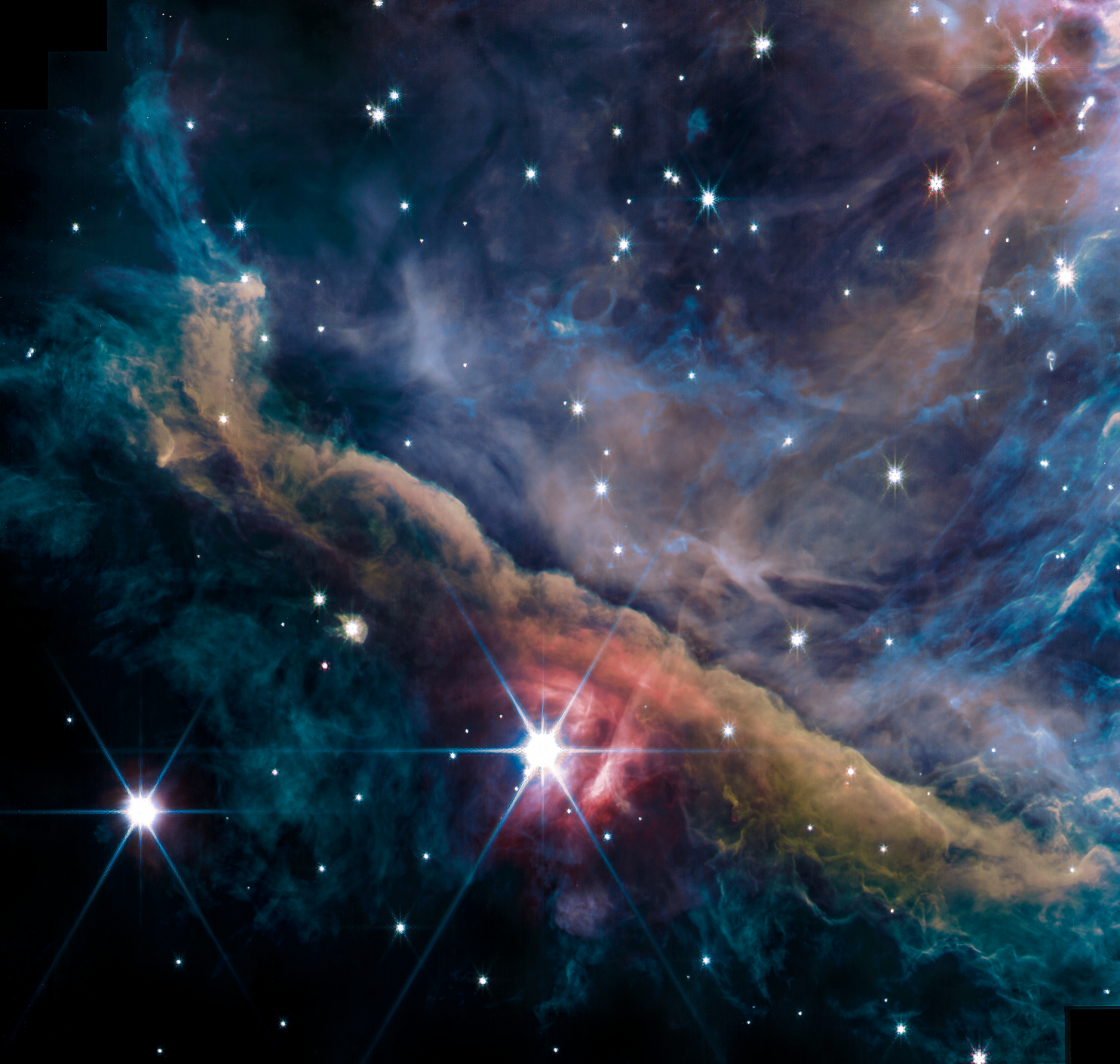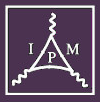An international research team has just revealed the first images of the Orion Nebula, the richest and closest star nursery to the Solar System, captured by the James Webb Space Telescope. They demonstrate the exceptional performance of this observatory to study star formation.
More information in the CNRS press release.

This is a composite image from several filters that represents emission from ionized gas, hydrocarbons, molecular gas, dust and scattered starlight. Most prominent is the Orion Bar, a wall of dense gas and dust that runs from the top left to the bottom right in this image, and that contains the bright star θ2 Orionis A. The scene is illuminated by a group of hot, young massive stars (known as the Trapezium Cluster) which is located just off the top right of the image. The strong and harsh ultraviolet radiation of the Trapezium cluster creates a hot, ionized environment in the upper right, and slowly erodes the Orion Bar away. Molecules and dust can survive longer in the shielded environment offered by the dense Bar, but the surge of stellar energy sculpts a region that displays an incredible richness of filaments, globules, young stars with disks and cavities.
Credit: NASA, ESA, CSA, Data reduction and analysis : PDRs4All ERS Team; graphical processing S. Fuenmayor
Technical details: The image was obtained with the James Webb Space Telescope NIRCam instrument on September 11, 2022. Several images in different filters were combined to create this composite image: F140M and F210M (blue); F277W, F300M, F323N, F335M, and F332W (green); F405N (orange); and F444W, F480M, and F470N (red).
More:
https://www.cnrs.fr/fr/telescope-james-webb-premieres-images-de-la-nebuleuse-dorion
Author affiliation:
Laboratoire de physique de L’École normale supérieure (LPENS, ENS Paris/CNRS/Sorbonne Université/Université de Paris)
Corresponding author: François Boulanger – Antoine Gusdorf
Communication contact: L’équipe de communication










